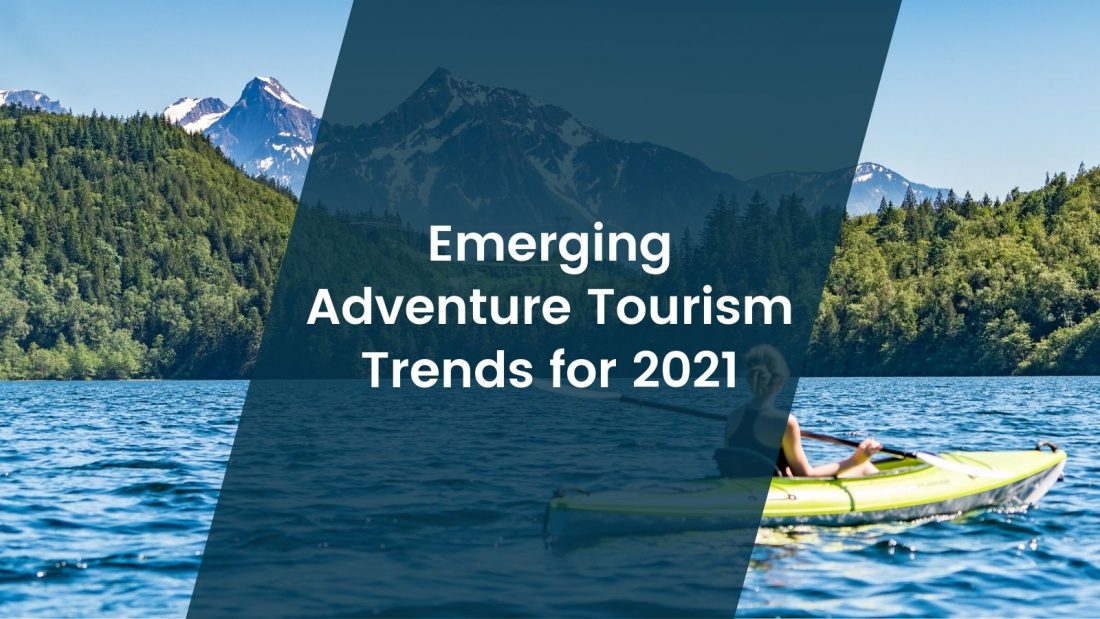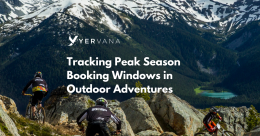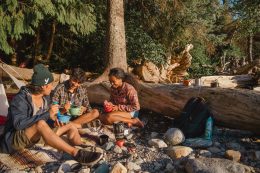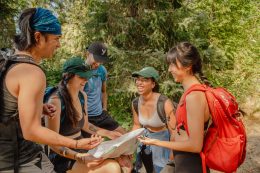Emerging Adventure Tourism Trends for 2021

We know that the travel industry is going to be affected by pandemic-related restrictions for the foreseeable future which is why adventure tourism providers need to look at emerging trends and traveler insights to understand how to best pivot and prepare for the summer season ahead.
Read on to discover 5 emerging adventure tourism trends.
1. Local Activities are Favoured
According to a recent WTTC report, “Traveller preferences and behaviours have shifted toward the familiar, predictable, and trusted. Domestic vacations, extensive planning, and the outdoors will reign in the short-term, with tourism businesses and destinations already adapting.”
Travel trends in 2021 suggest that domestic travel is going to remain strong as travellers discover the beauty of their own backyards. With a heavy focus on getting off the beaten path and avoiding popular tourist spots that are known to drive large crowds, local travellers will be looking for unique activities to go on with their bubble.
The good news for many tourism operators is that more local travellers will be willing to spend more money on unique local experiences since they won’t be travelling overseas for vacations anytime soon.
How to act on this insight:
The biggest shifts tour operators can make to respond to this trend is to develop fresh, fun experiences for local travellers instead of focussing on the interests of international tourists. A recent report by OIA showed an increase in outdoor participation by those living in urban areas, but highlighted a need to create more opportunities for outdoor recreation close to where people live in order to retain their interest. Those people also opted for activities with low barriers to entry (e.g. biking, hiking, birdwatching).
2. Sustainability is Top of Mind
The ongoing trend for greener, sustainable, and low impact adventures was heightened throughout the pandemic. In fact, according to a recent AMEX Travel Trends Report, 72% of Canadians are eager to support local communities through travel. Travellers are looking for meaningful adventures that put the community and nature first. This means supporting local businesses, eco-friendly adventures, and causes that make a positive impact on nature, local communities, and wildlife.
“From widespread unemployment and anti-racism movements to the restoration of natural habitats and the impact on ecosystems, the world has been re-invigorated to tackle social, environmental, and institutional sustainability.” (WTTC Report)
How to act on this insight:
We like to think of this trend as the new way forward for the tourism industry as a whole. Where all organizations will need to do their part for the environment, and consider their impact on local communities. Support local where you can, highlight your adventures sustainability efforts, and look to green any areas that are possible within your tours.
3. Health and Safety Plans are Essential
When it comes to exploring during a pandemic, the overwhelming sentiment is that health and safety remains a top concern for customers. “Health and safety are paramount in this new era. Personal experiences, advice from experts, and concerns for distancing will guide consumer behaviour in the short- to mid-term” according to the World Travel and Tourism Council’s latest report.
Research over the past year consistently points towards a more health-conscious explorer. 81% of global travellers ranked high cleanliness standards as their most desirable luxury amenity. When it comes to choosing which adventure to head out on, customers are more likely to favor companies that have a clear COVID safety policy in place over others.
How to act on this insight:
Make sure your COVID safety plan is known to potential customers, you can do this by highlighting it in your tour description, on your company website, and social media channels.
4. Rise of Contactless Booking
The WTTC report found that “COVID-19 is proving to be an unexpected catalyst in the Travel & Tourism sector’s quest for innovation and the integration of new technologies. Amid stay-at-home orders, digital adoption and consumption are on the rise, with consumers now expecting contactless technologies, among others, as a basic prerequisite for a safe and seamless travel experience.”
Since the onset of the pandemic, explorers are spending their free time online researching their next adventure and many feel more comfortable to have a contactless booking experience. Interestingly to note when it comes to upcoming bookings, according to research by American Express, 56% of global travellers indicated that they miss traveling so much, they are willing to book a trip even if they might have to cancel it in the future.
How to act on this insight:
Make it possible for the entire booking process to be done online, now more than ever explorers are searching for off-the-beaten-path, distinctive tour offerings that can be found and booked in a click. If your tour website doesn’t allow for online bookings, get in touch to learn how the Yervana platform can help you!
5. Small Group Travel
There’s a huge trend emerging around small group travel, people are looking to get out and share experience with just their bubble. The solo travel segment has declined 44% compared to 2019 levels and a recent survey of Canadian residents found that 50.6% canadian travellers are planning to vacation with family and 30.8% with friends.
How to act on this insight:
Create a ‘Bubble Booking’ collection of offerings that caters to private bookings for household bubbles or small groups, providing a personalized experience with a chance for people to reconnect together. Catering towards small group experiences, away from over-crowded hotspots will be of high interest throughout the summer.
Moving Forward
These new emerging trends bring new opportunities for the adventure tourism travel industry to provide adventures in a safe and meaningful way as people continue to look for local opportunities to get out and explore.
It’s time to rethink not only how the restrictions will affect summer bookings, but also how to use insights from these emerging trends to shape adventure offerings. For the time being, the adventure tourism industry won’t be like it used to be, so it is increasingly important to understand how to pivot and adapt in this new tourism climate moving forward.




